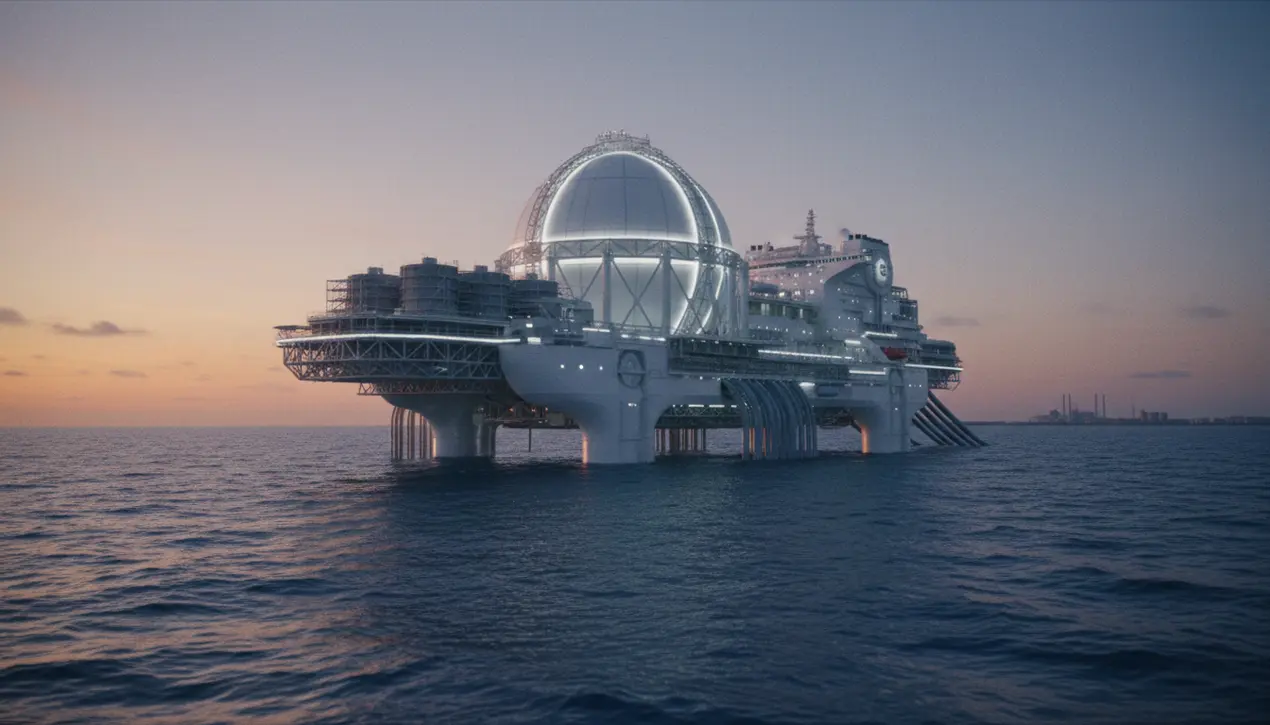
SciencephysicsExperimental Research
Startup Plans Fusion Reactor on a Boat for Easier Path.
TH
Thomas Green
5 hours ago7 min read
While the terrestrial race to achieve commercial nuclear fusion resembles a high-stakes global sprint, with contenders like Commonwealth Fusion Systems and TAE Technologies constructing sprawling, land-locked complexes, a decidedly more nautical approach is emerging from the periphery. Maritime Fusion, a startup whose very name signals its departure from convention, is charting a course to build the world's first commercial fusion power plant not on a stable foundation of earth, but on the dynamic, rolling deck of a ship.This isn't merely a quirky logistical choice; it's a profound strategic gambit rooted in the immense challenges that have plagued fusion for decades. The core appeal of fusion—the process that powers the sun, promising near-limitless, clean energy without long-lived radioactive waste—has always been counterbalanced by its staggering engineering and regulatory hurdles.On land, the path is littered with the ghosts of delayed timelines and budget overruns, mired in complex zoning laws, lengthy environmental impact assessments, and the not-in-my-backyard sentiment that can stall a project for years. By taking to the sea, Maritime Fusion is attempting an end-run around this bureaucratic quagmire.International waters operate under a different, often more lenient, legal framework, potentially allowing for faster iteration and deployment, much like how SpaceX utilizes offshore launch platforms for greater operational flexibility. The engineering rationale is equally compelling.A fusion reactor, particularly one using a tokamak design that contains a superheated plasma with powerful magnetic fields, requires massive cryogenic systems and is incredibly sensitive to ground vibrations and seismic activity. A vessel, engineered from the keel up as a stable, floating platform, could theoretically offer a more controlled and isolated environment, mitigating these terrestrial disturbances.Furthermore, the ocean provides a virtually infinite and free source of coolant for the reactor's immense thermal output, a significant operational cost and efficiency advantage over land-based systems that must build and maintain complex cooling infrastructure. However, the maritime path is not without its own titanic challenges.The corrosive saltwater environment is a relentless adversary for any engineering system. The constant motion of the sea, even with advanced stabilization, introduces vibrational and gravitational variables that could destabilize the precise magnetic confinement needed to sustain a fusion reaction.The question of connecting this floating power plant to onshore grids presents another monumental hurdle, likely requiring advanced undersea transmission cables or the production of hydrogen or other energy carriers onboard. The specter of public perception also looms large; the idea of a 'floating sun' might ignite fears reminiscent of nuclear propulsion controversies, despite the fundamental safety differences between fission and fusion.Yet, this bold vision echoes a long history of maritime innovation, from offshore oil rigs to floating liquefied natural gas (FLNG) facilities. If successful, Maritime Fusion’s approach could democratize energy access for coastal and island nations, provide power for energy-intensive seaborne industries, and ultimately serve as a proving ground for technology that could later be adapted for land. Their venture is a high-risk, high-reward bet that the easier path to harnessing the stars’ power isn't through solid ground, but by sailing directly into the deep, blue frontier.
#fusion energy
#maritime fusion
#startup
#experimental reactor
#commercial power
#featured
Stay Informed. Act Smarter.
Get weekly highlights, major headlines, and expert insights — then put your knowledge to work in our live prediction markets.
Related News
Comments
Loading comments...
© 2025 Outpoll Service LTD. All rights reserved.